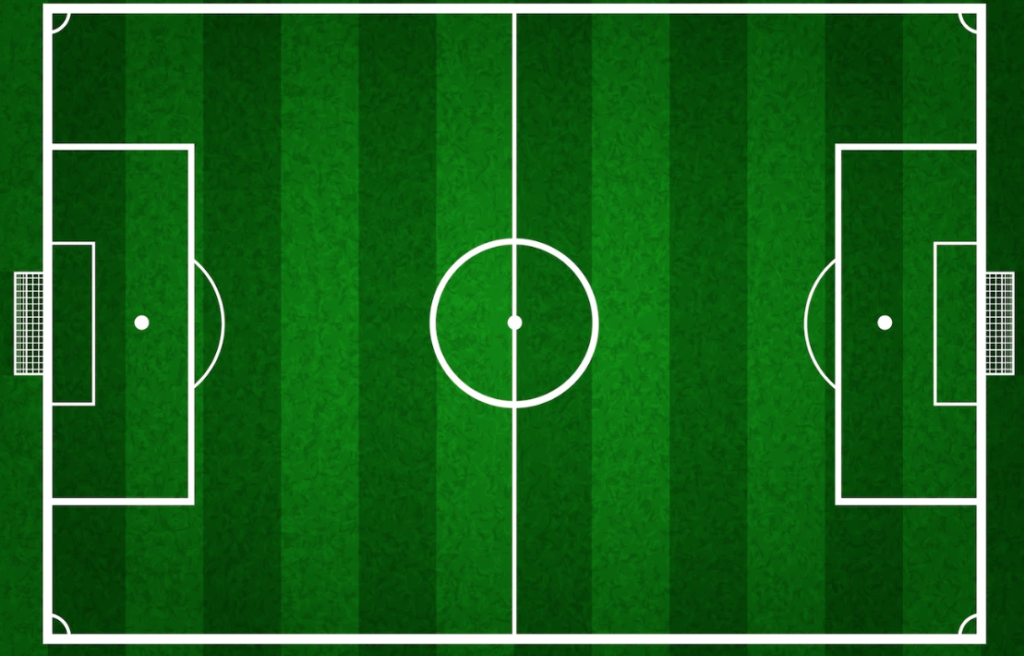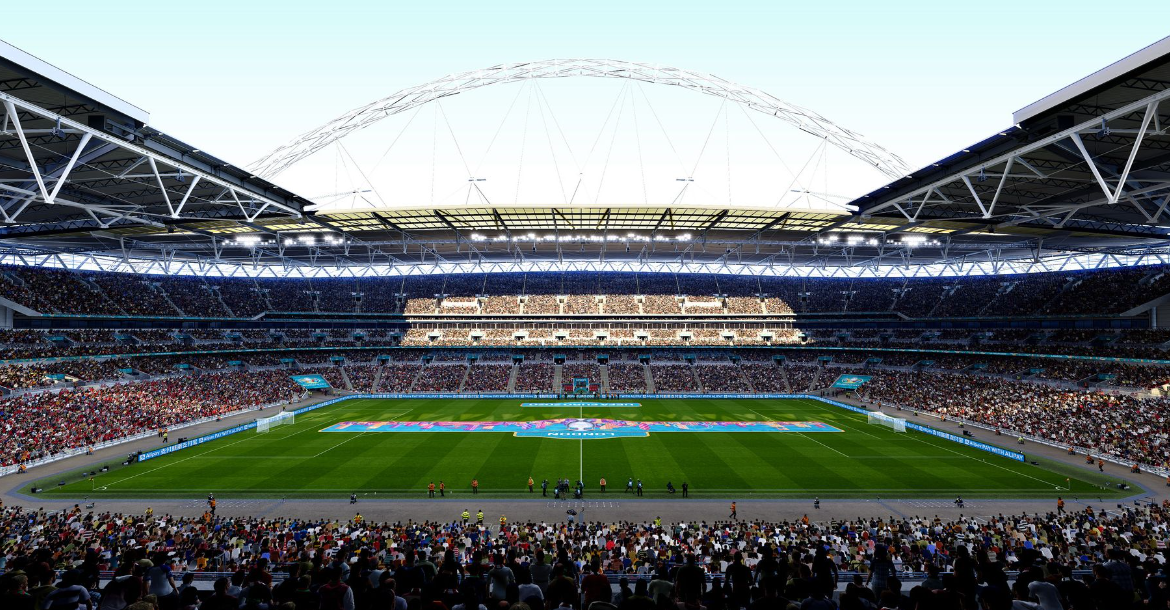How Long is a Soccer Field in Feet, A soccer field is typically 360 feet long. Soccer fields can vary in size based on regulations.
In most cases, a standard soccer field measures 360 feet in length. The length of a soccer field in feet is an essential aspect of the game, influencing gameplay and tactics. Understanding the dimensions of a soccer field is crucial for players, coaches, and fans alike.
The size of a soccer field impacts the speed of play, positioning of players, and overall strategy during a match. With a length of 360 feet, soccer fields provide ample space for players to showcase their skills and compete at various levels.
Dimensions of a Soccer Field
When it comes to soccer, the dimensions of the field play a crucial role in determining the flow and dynamics of the game. Understanding the length and width of a soccer field is essential for both players and fans. Let’s delve into the specifics of the Dimensions of a Soccer Field.

Length of a Soccer Field
The length of a soccer field typically ranges between 100 to 130 meters, equivalent to 328 to 427 feet. This vast expanse provides ample space for players to showcase their skills and maneuver the ball effectively.
Width of a Soccer Field
On the other hand, the width of a soccer field usually falls between 50 to 100 meters, which is approximately 164 to 328 feet. The width of the field complements its length, offering a balanced playing surface for teams to compete on.
Regulation Soccer Field
Regulation of soccer fields is essential for all professional soccer matches. The field’s dimensions and measurements are critical as they have a direct impact on the game’s outcomes. Knowing the length and width requirements of a regulated soccer field is crucial for players, coaches, and fans alike. In this article, we will discuss FIFA standards and the length and width requirements of a regulation soccer field in feet.
Fifa Standards
FIFA is the governing body of soccer worldwide and has established specific standards for soccer fields. These standards ensure that all fields used in official FIFA matches meet the same requirements. According to FIFA, the soccer field’s length should be between 100-130 yards, while the width should be between 50-100 yards. The field must be rectangular, and the touchlines must be longer than the goal lines.
Length and Width Requirements
The length and width of a soccer field can vary depending on the level of play. However, for a regulation soccer field, the length should be between 100-130 yards, while the width should be between 50-100 yards. The field is divided into two halves, and each half is further divided into two sections. The center circle has a radius of 10 yards, and the penalty box is 44 yards wide and 18 yards long. The goal area is a six-yard box, and the penalty spot is 12 yards from the goal line.
Therefore, the length and width requirements of a regulated soccer field are crucial for all players and fans to understand. Meeting these requirements ensures that all matches are played on a level playing field and that the game’s outcomes are fair. By adhering to FIFA standards and the length and width requirements, soccer fields can be standardized and provide a consistent playing experience for all players and fans.
Variations in Soccer Field Sizes
When it comes to the game of soccer, the dimensions of the playing field can vary. Understanding the variations in soccer field sizes is crucial for players, coaches, and fans alike. Let’s delve into the non-standard field sizes and the factors influencing field dimensions.
Non-standard Field Sizes
Non-standard soccer field sizes are not uncommon, especially at the youth level and in informal settings. These fields may range in length from 50 to 100 yards and in width from 25 to 50 yards, showcasing the flexibility and adaptability of the game. While these dimensions may not align with official standards, they provide opportunities for players to develop their skills in various spatial configurations.
Factors Influencing Field Dimensions
Several factors influence the dimensions of a soccer field. Local regulations or the availability of space may dictate the size of the field. Geographic location can also play a role, as fields in some regions are constructed to fit within specific measurements, such as those in meters or yards. Additionally, age groups and levels of play often contribute to variations in field sizes. Understanding these factors helps to ensure that soccer fields are tailored to the needs of the players and the community.

Implications of Field Size
How Long is a Soccer Field in Feet and Implications of Field Size
Impact on Gameplay
Field size plays a pivotal role in shaping the dynamics of a soccer match. The dimensions of the soccer field directly impact the style of play, the speed of the game, and the overall strategy employed by teams.
How Long is a Soccer Field in Feet
The size of the soccer field influences the strategies adopted by players. In a larger field, players have more space to maneuver and may focus on long passes and strategic positioning. On the other hand, in a smaller field, players may emphasize quick, short passes and close ball control to navigate the restricted space effectively.
Comparing Soccer Field Sizes
When it comes to soccer field sizes, understanding the dimensions is crucial for players and fans alike. One common query that arises is “How long is a soccer field in feet?” Let’s delve into comparing soccer field sizes with other sports fields and exploring the international variances.
Comparison with other Sports Fields
Soccer fields are known for their vast expanse, but how do they compare to other sports fields in terms of size?
International Variances
In different parts of the world, soccer field dimensions can vary, leading to interesting variations in size and layout.
Historical Evolution of Field Dimensions
When exploring the historical evolution of field dimensions in soccer, it becomes apparent that the size of a soccer field has undergone significant changes over time, influenced by various factors such as tactical trends and playing styles.
Changes over Time
In the early days of soccer, field dimensions varied widely and were not standardized. However, as the sport developed, governing bodies like FIFA began to establish specific guidelines for field sizes. The standard length of a soccer field has evolved over the years, with the current dimensions set between 100 to 130 yards in length and 50 to 100 yards in width.
Influence of Tactical Trends
The evolution of tactical trends in soccer has also played a role in shaping field dimensions. For instance, teams that emphasize possession and intricate passing may prefer a larger field to create space and stretch the opposition. On the other hand, teams that focus on quick transitions and pressing may benefit from a smaller, more compact field.
Future Trends in Field Dimensions
When considering the future trends in soccer field dimensions, it’s essential to examine how technological innovations and adaptations to climate change are shaping the way soccer fields are designed and maintained. These factors not only impact the playing experience but also contribute to the overall sustainability and longevity of the sport. Let’s delve into the potential developments in field dimensions that may arise from these trends.
Technological Innovations
As technology continues to advance, it is increasingly influencing the way soccer fields are constructed and maintained. With the use of advanced tools and equipment, such as GPS-based precision measurement systems, ground-penetrating radar for assessing soil conditions, and automated turf maintenance machinery, the accuracy and efficiency in creating and preserving FIFA soccer field dimensions are enhanced. These innovations not only ensure that the playing surface meets the required standards but also contribute to the durability and resilience of the field, ultimately benefiting players and facilitating high-quality gameplay.
Adaptations to Climate Change
With the growing concerns about climate change, there is a pressing need to adapt soccer field dimensions to mitigate the potential impact of environmental shifts. High school soccer field dimensions in feet may need to be reevaluated to accommodate changes in weather patterns, including increased rainfall or higher temperatures. This could entail incorporating sustainable drainage systems to prevent waterlogging, utilizing heat-resistant turf varieties, and implementing shading solutions to shield the field from excessive sun exposure. By proactively addressing these climate-related challenges, soccer fields can remain resilient and conducive to play, regardless of environmental fluctuations.
Concluding Thoughts
When it comes to soccer field dimensions, understanding the length of a soccer field in feet is crucial for players, coaches, and fans alike. Let’s delve into the significance of field size and how it ensures a balance in regulations.
Significance of Field Size
High school soccer field dimensions in feet are approximately 360 feet by 225 feet, while professional soccer fields can vary from 330 feet to 360 feet in length. Understanding how big a professional soccer field is is crucial for players as it impacts their strategy and gameplay. The dimensions of a soccer field play a pivotal role in the overall dynamics of the game, influencing player positions, passing accuracy, and overall gameplay. Moreover, it affects the spectators’ experience, ensuring an optimal view of the game. Additionally, knowing the size of a soccer field is essential for ground maintenance and marking, ensuring that it complies with regulations and standards.

Maintaining Balance in Regulations
Understanding the dimensions of a soccer field is vital for maintaining balance in regulations. Whether it’s comparing how big a football field is to a soccer field or ensuring that the field size adheres to FIFA regulations, the dimensions play a crucial role. By adhering to specific measurements, it ensures fair gameplay and standardization across different levels of competition. Whether it’s a youth game or a professional match, having consistent field dimensions provides a level playing field for all involved. This balance in regulations also extends to safety considerations, ensuring that the field size meets the required standards for player well-being and fair competition.
Conclusion
The standard soccer field measures about 360 feet in length and 225 feet in width. Understanding the dimensions of a soccer field is crucial for players, coaches, and fans to comprehend the dynamics of the game. Whether you’re a soccer enthusiast or simply curious, knowing the exact measurements of a soccer field in feet adds depth to your understanding of the sport.

